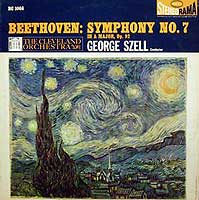

There's not an incompetent performance in the lot, and while I may find some less satisfying than others, I really talk about my own predilections and shavings of good. These are, apparently, all live recordings, and (to paraphrase Shaw) you almost never can tell. In short, the performance falls into the category of "modern, with slightly reduced forces." The Chamber Orchestra of Europe plays wonderfully well, capable of everything Harnoncourt asks of them – from uncanny rhythmic precision and ensemble clarity to long singing lines – and Teldec has recorded them beautifully. Harnoncourt does make use of the valveless natural trumpet (for a very interesting reason read the interview in the liner notes) and what sounds to me like natural-skin timpani. The Chamber Orchestra of Europe plays, for the most part, modern instruments in the modern way. He constantly pushed the limits of expression and took huge chances in his interpretations, which, more often than not, paid off in revelatory readings. Harnoncourt, of course, made his name as one of the bright lights of historically-informed performance (HIP). They are the Richard Corys of symphonies – outwardly straightforward, and yet always holding back something important that you probably don't know. With the others, a conductor faces the danger that their emotional essence will elude him. On the other hand, the Eroica has broken the greatest of conductors, and the Ninth, like its magnificent contemporary Missa Solemnis, always threatens to shatter into musical fragments. It could be luck, but these works do strike me as somehow sure-fire.
#Best beethoven 7th symphony recording professional
Don't ask me why, but I've never heard a bad or clueless professional performance of symphonies one, five, and six. Of course, it's easy to say that now.Įven though the symphonies as a whole challenge conductors, performers do get a couple of breaks. If I were to collect Beethoven symphonies for the first time, knowing what I now know, I would go for individual CDs rather than for a set. Apparently, Beethoven's symphonies pose one of the great interpretive challenges to a conductor, perhaps because of their range of mood and style. However, at this point, I haven't heard an integral set of the symphonies which completely satisfies me or, worse, where the account of each symphony in the set is my favorite.

This undoubtedly limits my usefulness as a reviewer. For both of us, the tremendous emotional range, despite an "excluded middle," found in piece after piece probably accounts for a good deal of the estimation in which we hold Beethoven.Īgain, there are lots of recordings out there, and I haven't heard anywhere close to all of them. For others, it's probably the Ninth, although even "my" Beethoven can be heard in the choral finale. For me, the archetypal Beethoven work is the overture to Egmont. Consequently, although I enjoy some of Karajan's Beethoven, more often than not, that grand, suave approach seems to me to miss the music's point. I'd call the music "bi-polar," if it weren't for the unfortunate medical connotations and the composer's success at integrating all his moods. There's very little modest contentment, such as one finds in Haydn, Mozart, Schubert, and Dvořák. The music contains great rage and tenderness, nobility and agitation, and very little in between. There's not only the feeling that anything can happen, including the opposite of what has gone before, but that what does happen is extraordinarily right. To me, on the other hand, Beethoven's music has "edges" and a charge of nervous explosiveness. Karajan, I think, speaks to this picture. To some, Beethoven creates grand monuments to Humanity, and they want performances which give them that. That said, however, most of us carry around a picture of "our" Beethoven in our heads. Performers continually find new, valid approaches. As much as any composer and more than most, Beethoven's music resists "definitive" interpretation. Most hard-core classical collectors don't stop at one set of Beethoven symphonies. I'll concentrate on performance rather than on the music itself. I don't know how many integral sets – so let's say a jillion – of these symphonies compete for our cash, and the real question becomes why buy this set.

These symphonies seem fairly well known, so there's little, if anything, I can add there. Summary for the Busy Executive: When it cooks, very Beethovenian and beautifully played, besides.įor nearly six hours of music, I'm writing a rather short review.


 0 kommentar(er)
0 kommentar(er)
